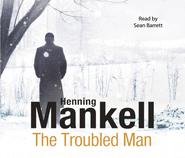По всем вопросам обращайтесь на: info@litportal.ru
(©) 2003-2024.
✖
Roseanna
Автор
Год написания книги
2019
Настройки чтения
Размер шрифта
Высота строк
Поля
ANSWER: There haven't been many leads in this case. In addition, there are certain important facts in this case that could not be made public without hindering its solution.
QUESTION: Is an arrest immediately forthcoming?
ANSWER: It is conceivable, but from the present standpoint we cannot give you a definite answer, unfortunately.
QUESTION: Do you have any real clues in this case?
ANSWER: All we can say is that our investigations are following certain distinct lines.
(After this amazing series of half truths the Chief of Police threw a sorrowful look at the Public Prosecutor who stubbornly examined his cuticles.)
QUESTION: Criticism has been directed towards several of my colleagues. Is it the opinion of those in charge of the case that these colleagues have more or less intentionally twisted the facts?
(This question was asked by the notoriously well-known reporter whose article had made such a deep impression on Kollberg.)
ANSWER: Yes, unfortunately.
QUESTION: Isn't it more a case of the police leaving us reporters out in the cold and not giving us useful information? And deliberately leaving us to our own devices to find out whatever we can in the field?
ANSWER: Hmm.
(Several of the less talkative journalists began to show signs of displeasure.)
QUESTION: Have you identified the corpse?
(Superintendent Larsson, with a quick glance, threw the ball over to Ahlberg, sat down, and demonstratively took a cigar out of his breast pocket.)
ANSWER: No.
QUESTION: Is it possible that she is from this city or somewhere around here?
ANSWER: It doesn't seem likely.
QUESTION: Why not?
ANSWER: If that were the case we would have been able to identify her.
QUESTION: Is that your only reason for suspecting that she comes from another part of the country?
(Ahlberg looked dismally at the Chief of Police who was devoting all his attention to his cigar.)
ANSWER: Yes.
QUESTION: Has the search of the bottom near the breakwater produced any results?
ANSWER: We have found a number of things.
QUESTION: Do these things have anything to do with the crime?
ANSWER: That is not easy to answer.
QUESTION: How old was she?
ANSWER: Presumably between twenty-five and thirty.
QUESTION: Exactly how long had she been dead when she was found?
ANSWER: That isn't easy to answer, either. Between three and four days.
QUESTION: The information that has been given to the public is very vague. Isn't it possible to tell us something more exact, information which really says something?
ANSWER: That's what we are trying to do here. We have also retouched a picture of her face which you are welcome to, if you want to have it.
(Ahlberg reached for a group of papers on the desk and started to hand them out. The air in the room was heavy and humid.)
QUESTION: Did she have any particular marks on her body?
ANSWER: Not as far as we know.
QUESTION: What does that mean?
ANSWER: Simply, that she had no marks at all.
QUESTION: Has a dental examination given any special clues?
ANSWER: She had good teeth.
(A long and pressing pause followed. Martin Beck noted that the reporter in front of him was still doodling with the star he had drawn.)
QUESTION: Is it possible that the body was thrown into the water at some other place and that it was brought to the breakwater by the current?
ANSWER: It doesn't seem likely.
QUESTION: Have you learned anything by knocking on doors?
ANSWER: We are still working on that.
QUESTION: To sum up, isn't it true that the police have a complete mystery on their hands?
It was the Public Prosecutor that answered:
‘Most crimes are a mystery in the beginning.’
With that, the press conference ended.
On the way out, one of the older reporters stopped Martin Beck, laid his hand on his arm and said: ‘Don't you know anything at all?’ Martin Beck shook his head.
In Ahlberg's office two men were going through all the material they had gathered from the operation of knocking on doors.






